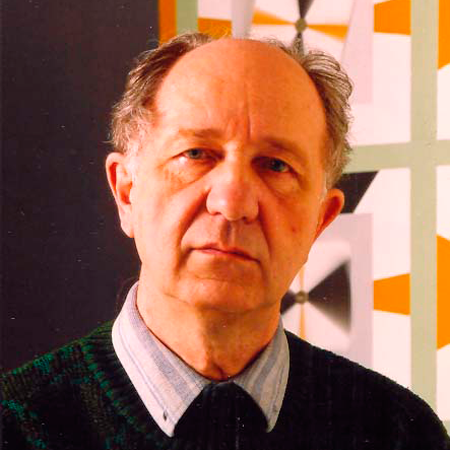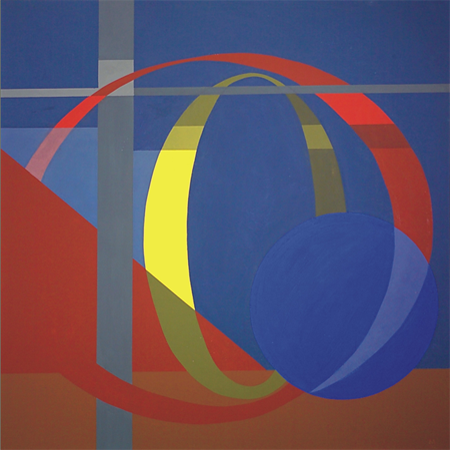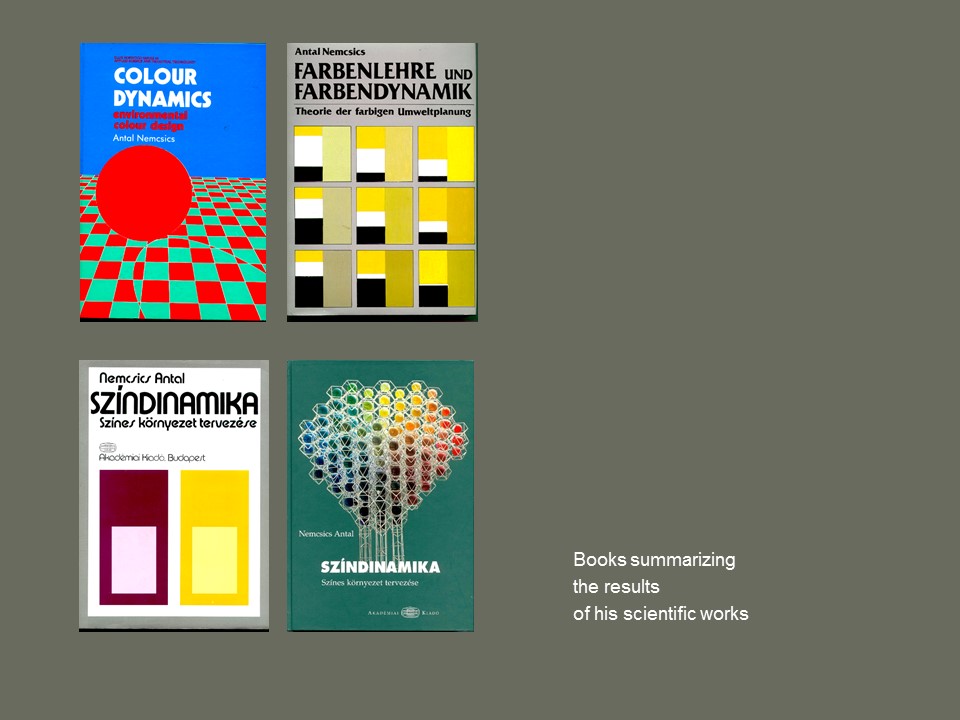BOOKS, LECTURES, PATENTS OF ANTAL NEMCSICS
BOOKS, LECTURES, PATENTS
OF ANTAL NEMCSICS

From the beginning of the 1960s I only sent pictures to exhibitions sporadically. I painted pictures and I realized that more and more colour patches were stepping off my canvases. These colours became autonomous, they made me think, later on they offered themselves to be objects of specific examinations. I started exploring the laws of the realm of colours passionately. I was looking for the reason why one colour seems alive and another dead, while in one we feel the vibration of life, while the other one cannot even start to speak. Why is it that if we consider some hues that seem very similar, some of them always look good as compositions, while others look always false. Why is it that our choice of colours for a pictorial representation is only free within certain limits. I have realized that aesthetic judgements may be affected by physiological factors, and these judgments can be described by psychometric scales derived from physical quantities. I started researching the relations between space experience, function and colours. I became captive to colour dynamics, a new science. I built up and performed sets of experiments. I have used various equipment, computers to assist me with my work. I became a research scientist, I wrote publications, gave lectures…
|
|
||
|
The lectures listed below may be viewed in the EsterházyCastle in Pápa, in the permanent exhibition of Antal Nemcsics, on touchscreen monitors. These lectures were originally given in the Technical University of Budapest, in the International Academy of Colour Sciences and in International Congresses.
|
||
|
Lectures in PowerPoint presentations
|
Lectures on video
|
|
|
1. The colour 2. The system of colours 3. Colour in the life of man 4. The Coloroid colour system 5. The Coloroid Colour Order System 6. Das Coloroid Farbsystem 7. Coloroid standard MS7300 8. Coloroid software 9. Coloroid is an aesthetically consistent system of colours 10. Clear notation of colours in the Coloroid colour system 11. Colour, colour stimulus, colour perception 12. Colour measurement 13. Colour dynamics 14. Colour dynamics in practice 15. What exactly is colour dynamics 16. Colour harmony 17. Dichromatic harmony 18. Monochromatic harmony 19. Colour harmony in built space 20. Relations of colour harmony in our environment |
21. Simultaneous contrast 22. Colour preference 23. Colour association 24. Colour association and psychosomatic effects 25. Planning the visual environment by the Coloroid colour system 26. The visual identity of our built environment 27. Planning of colours using the Coloroid colour system 28. Colour in the definition of the visual identity of the city 29. The role of colour in the definition of the visual identity of the Balaton region. 30. A few thoughts on educational courses on colours 31. Educational courses on visual environment planning. 32. Colours in the school 33. Courses on colours in the Technical University of Budapest
|
1. Notation of colours (in Hungarian language) 2. Colour coding 3. Colour harmony (in Hungarian language) 4. Colour Harmony 5. Laws of the Realm of Colours (in Hungarian language) 6. Tales of the Millennium (in Hungarian language) 7. Discussions on colours (in Hungarian language) 8. The colour on a plane and in space (in Hungarian language) 9. My travels in the Real of Colours (in Hungarian language) 10. Planning of the colourful environment (in Hungarian language)
|
|
|
||
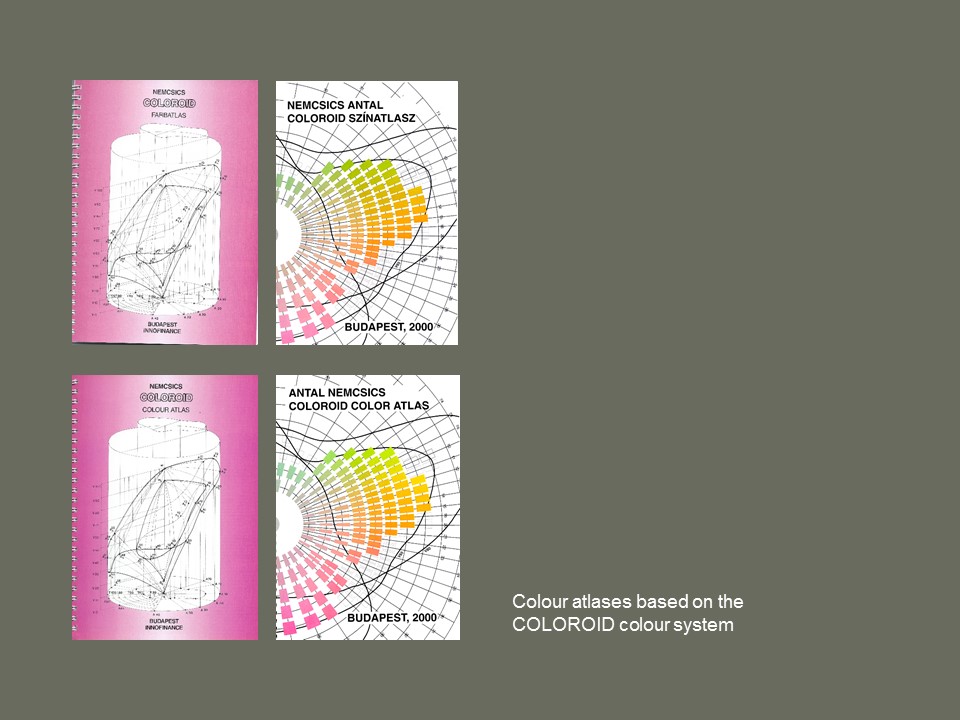 |
||
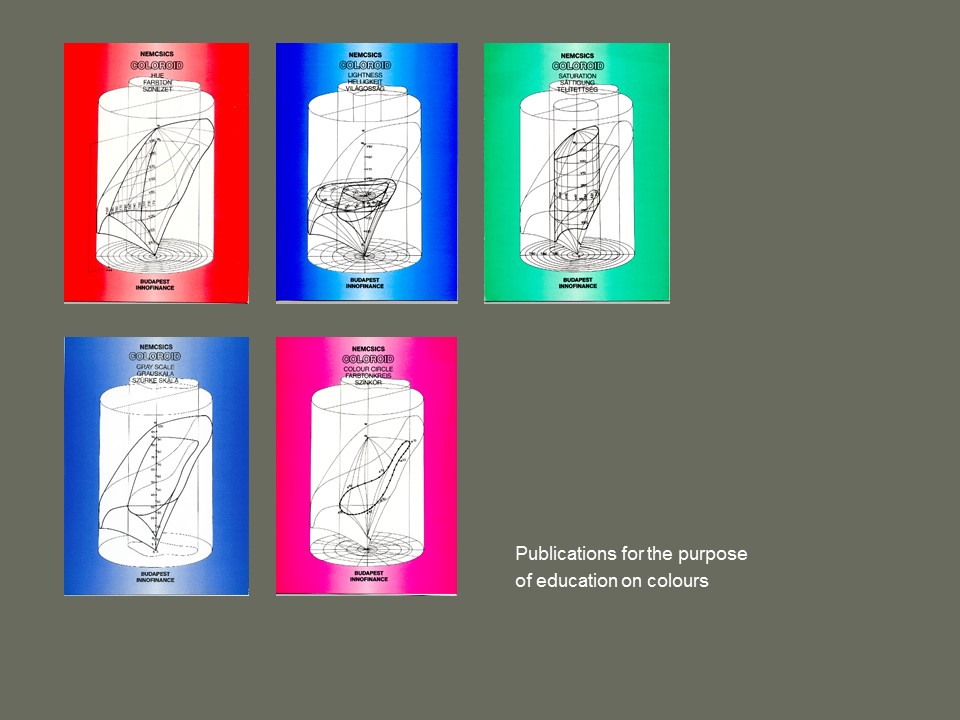 |
||
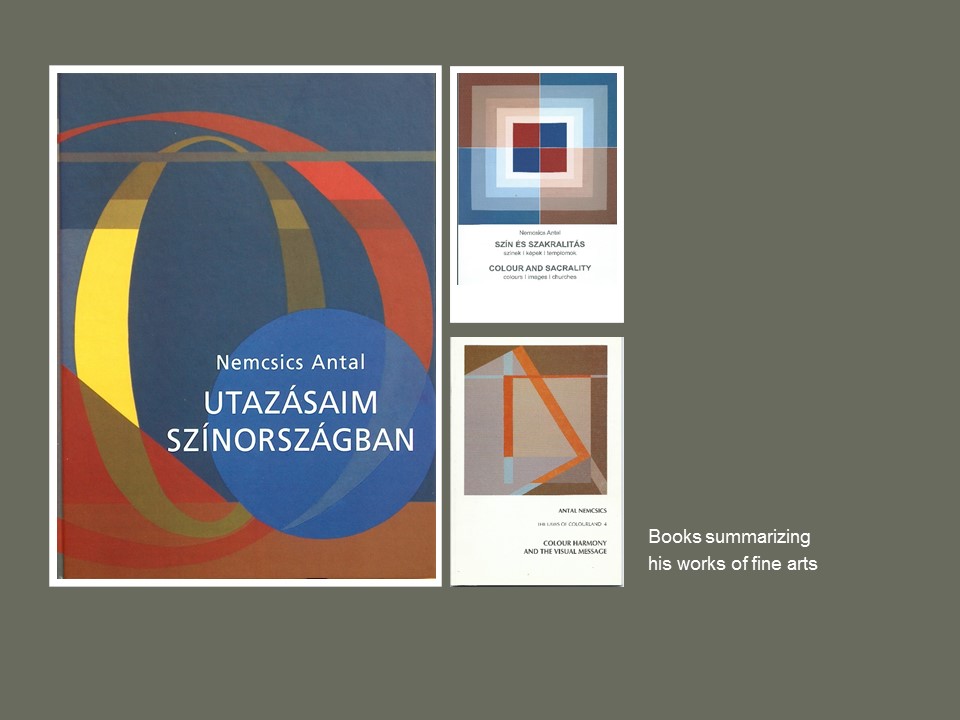 |
||
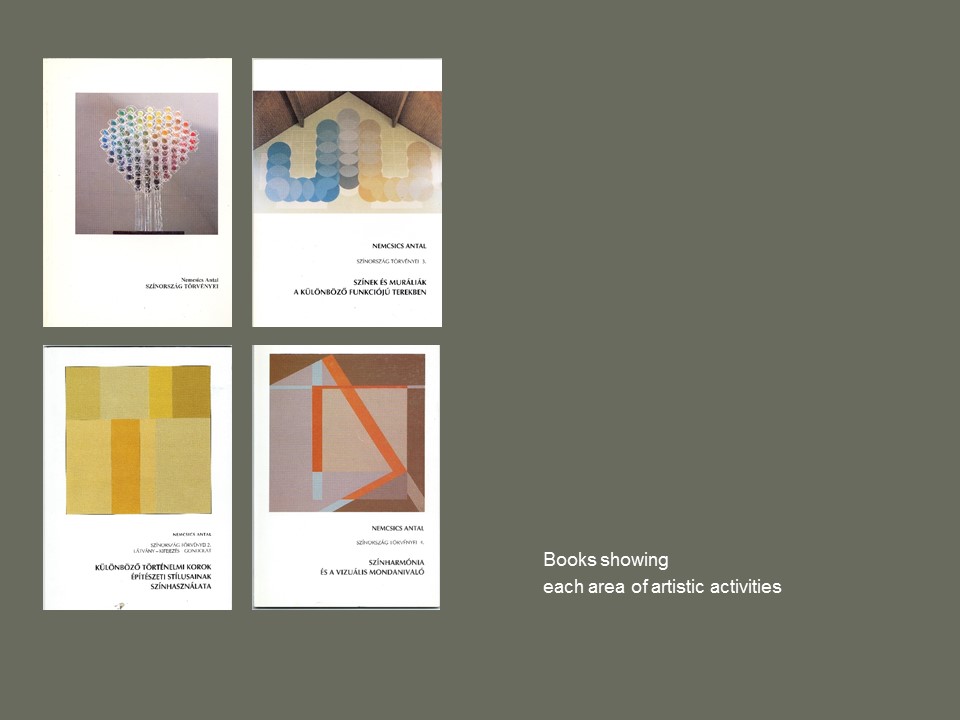 |
||
|
Number of publications according to the REPOSITORY OF HUNGARIAN SCIENTIFIC WORKS maintained by the HungarianAcademy of Sciences
As a book author 17 of that written in a foreign language 7 number of citations 78 As a book editor 4 of that written in a foreign language 4 Part of a book 9 of that written in a foreign language 4 Articles in scientific journals 30 of that international 13 Number of citations 141 Conference proceedings 91 of that written in a foreign language 56 Number of citations 47
His scientific accomplishments are cited by a total of 280 scientific researchers His scientific accomplishments are referred to in 65 scientific theses |
||
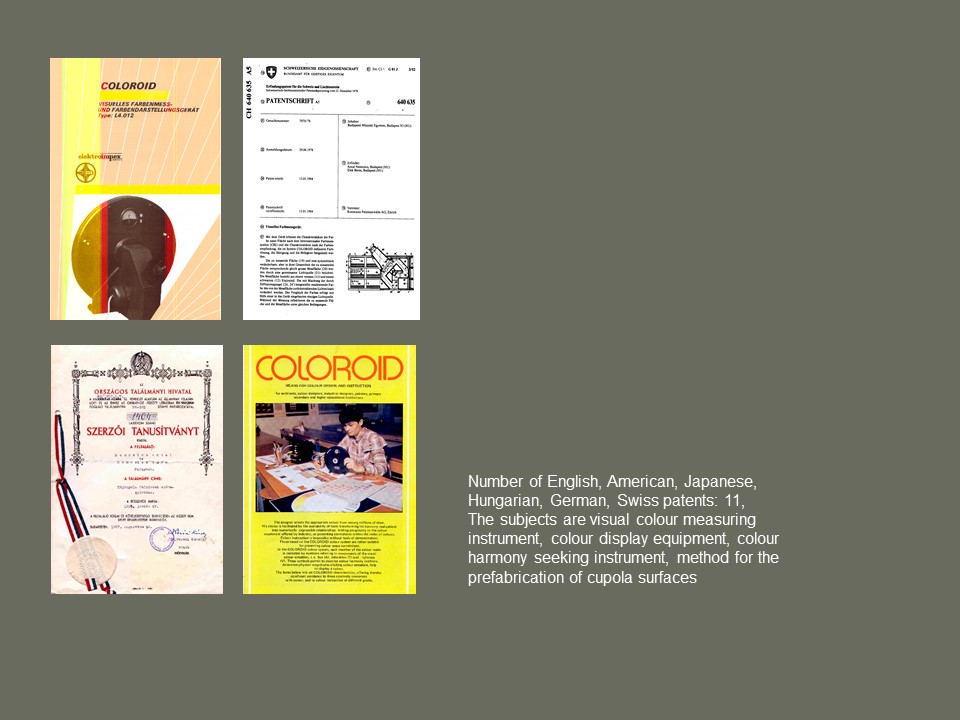 |
||
